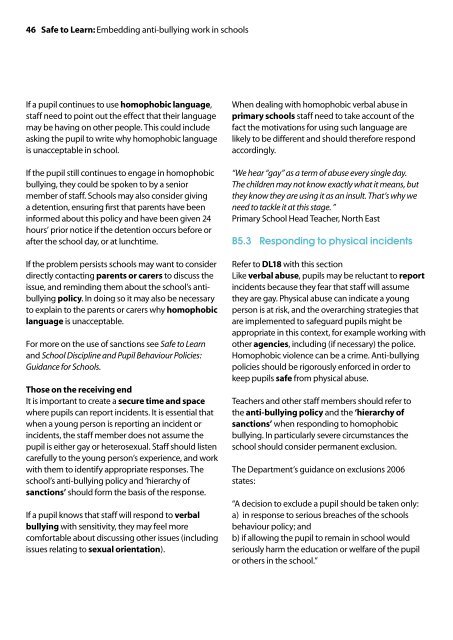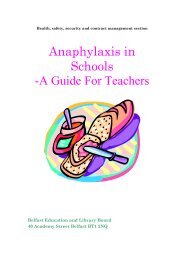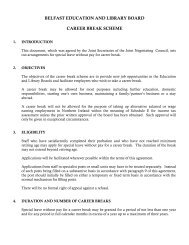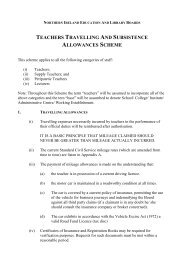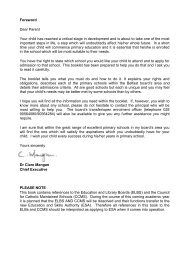Homophobic bullying - EACH
Homophobic bullying - EACH
Homophobic bullying - EACH
- No tags were found...
You also want an ePaper? Increase the reach of your titles
YUMPU automatically turns print PDFs into web optimized ePapers that Google loves.
46 Safe to Learn: Embedding anti-<strong>bullying</strong> work in schoolsIf a pupil continues to use homophobic language,staff need to point out the effect that their languagemay be having on other people. This could includeasking the pupil to write why homophobic languageis unacceptable in school.If the pupil still continues to engage in homophobic<strong>bullying</strong>, they could be spoken to by a seniormember of staff. Schools may also consider givinga detention, ensuring first that parents have beeninformed about this policy and have been given 24hours’ prior notice if the detention occurs before orafter the school day, or at lunchtime.If the problem persists schools may want to considerdirectly contacting parents or carers to discuss theissue, and reminding them about the school’s anti<strong>bullying</strong>policy. In doing so it may also be necessaryto explain to the parents or carers why homophobiclanguage is unacceptable.For more on the use of sanctions see Safe to Learnand School Discipline and Pupil Behaviour Policies:Guidance for Schools.Those on the receiving endIt is important to create a secure time and spacewhere pupils can report incidents. It is essential thatwhen a young person is reporting an incident orincidents, the staff member does not assume thepupil is either gay or heterosexual. Staff should listencarefully to the young person’s experience, and workwith them to identify appropriate responses. Theschool’s anti-<strong>bullying</strong> policy and ‘hierarchy ofsanctions’ should form the basis of the response.If a pupil knows that staff will respond to verbal<strong>bullying</strong> with sensitivity, they may feel morecomfortable about discussing other issues (includingissues relating to sexual orientation).When dealing with homophobic verbal abuse inprimary schools staff need to take account of thefact the motivations for using such language arelikely to be different and should therefore respondaccordingly.“We hear “gay” as a term of abuse every single day.The children may not know exactly what it means, butthey know they are using it as an insult. That’s why weneed to tackle it at this stage. ”Primary School Head Teacher, North EastB5.3 Responding to physical incidentsRefer to DL18 with this sectionLike verbal abuse, pupils may be reluctant to reportincidents because they fear that staff will assumethey are gay. Physical abuse can indicate a youngperson is at risk, and the overarching strategies thatare implemented to safeguard pupils might beappropriate in this context, for example working withother agencies, including (if necessary) the police.<strong>Homophobic</strong> violence can be a crime. Anti-<strong>bullying</strong>policies should be rigorously enforced in order tokeep pupils safe from physical abuse.Teachers and other staff members should refer tothe anti-<strong>bullying</strong> policy and the ‘hierarchy ofsanctions’ when responding to homophobic<strong>bullying</strong>. In particularly severe circumstances theschool should consider permanent exclusion.The Department’s guidance on exclusions 2006states:“A decision to exclude a pupil should be taken only:a) in response to serious breaches of the schoolsbehaviour policy; andb) if allowing the pupil to remain in school wouldseriously harm the education or welfare of the pupilor others in the school.”


